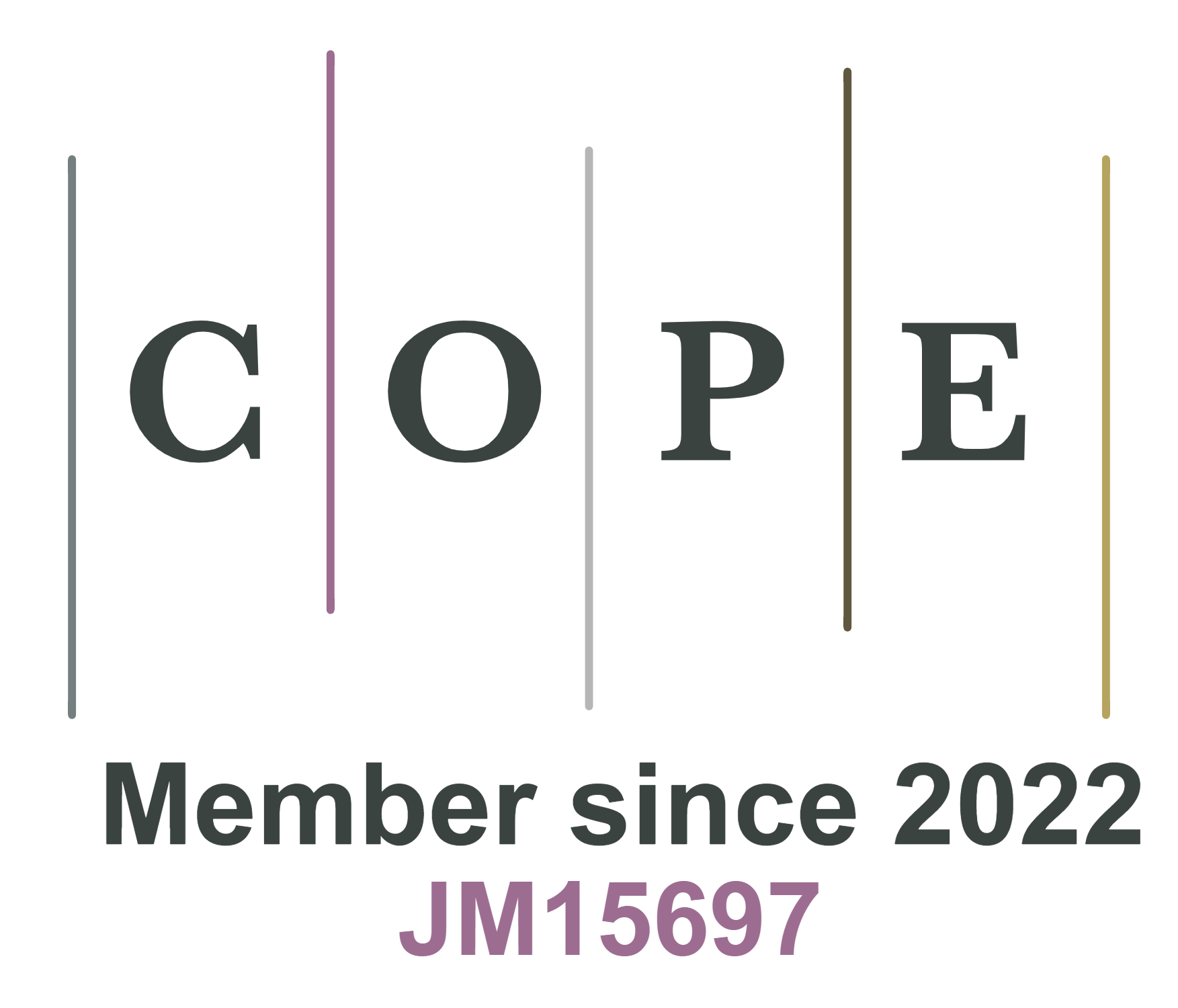REFERENCES
1. Mockapetris P. Domain names-implementation and specification. RFC1035 1987. Available from: https://tools.ietf.org/html/rfc1035. [Last accessed on 17 Aug 2020].
2. Mockapetris P. Domain names-implementation and facilities. RFC1034 1987.
3. Engel S. My ether wallet DNS attack explained. Available from: https://cryptovoid.net/mew-dns-attack-explained. [Last accessed on 17 Aug 2020].
4. Arends R, Austein R, Larson M, Massey D, Rose S. DNS security introduction and requirements. RFC 4033 2005:1-21. Available from: https://tools.ietf.org/html/rfc4033. [Last accessed on 17 Aug 2020].
5. Arends R, Austein R, Larson M, Massey D, Rose S. Resource records for the DNS security extensions. RFC 4034 2005:1-30. Available from: https://tools.ietf.org/html/rfc4034. [Last accessed on 17 Aug 2020].
6. Arends R, Austein R, Larson M, Massey D, Rose S. Protocol modifications for the DNS security extensions. RFC 4035 2005:1-54. Available from: https://tools.ietf.org/html/rfc4035. [Last accessed on 17 Aug 2020].
7. Eastlake 3rd D. Domain name system security extensions. RFC 2535 1999. Available from: https://tools.ietf.org/html/rfc2535. [Last accessed on 17 Aug 2020].
8. Chung T, an Rijswijk-Deij R, Chandrasekaran B, Choffnes D, Levin D, et al. A longitudinal, end-to-end view of the DNSSEC ecosystem. Proceedings of the 26th USENIX Conference on Security Symposium Vancouver, BC. USENIX Association, USA; 2017. pp. 1307-22.
9. NIST. Estimating USG IPv6 and DNSSEC external service deployment status. Available from: https://fedv6-deployment.antd.nist.gov/cgi-bin/generate-gov. [Last accessed on 17 Aug 2020].
10. Roosa SB, Schultze S. Trust darknet: control and compromise in the internet’s certificate authority model. IEEE Internet Comput 2013;17:8-25.
11. Wikipedia. 2016 Dyn cyberattack. Avaliable from: https://en.wikipedia.org/wiki/2016_Dyn_cyberattack. [Last accessed on 17 Aug 2020].
12. Downdetector. Internet outage map. Avaliable form: https://downdetector.com/status/centurylink/map/. [Lasted accessed on 27 Jul 2020].
13. NETSCOUT. NETSCOUT’s 14th Annual Worldwide Infrastructure Security Report. Avaliable from: https://www.netscout.com/report/. [Last accessed on 17 Aug 2020].
14. Zhauniarovich Y, Khalil I, Yu T, Dacier M. A survey on malicious domains detection through DNS data analysis. ACM Computing Surveys (CSUR) 2018;51:1-36.
15. Fernandes D, Soares LFB, Gomes JV, Freire M, Inácio PRM. Security issues in cloud environments: a survey. Int J Inf Secur 2014;13:113-70.
16. Alieyan K, ALmomani A, Manasrah A, Kadhum MM. A survey of botnet detection based on DNS. Neural Computing and Applications 2017;28:1541-58.
17. Peng T, Leckie C, Ramamohanarao K. Survey of network-based defense mechanisms countering the DoS and DDoS problems. ACM Comput Surv 2007;39:31-42.
18. Casalicchio E, Caselli M, Coletta A. Measuring the global domain name system. IEEE network 2013;27:25-31.
19. Wikipedia. List of DNS resource records. Available from: https://en.wikipedia.org/wiki/List-of-DNS-record-types. [Last accessed on 17 Aug 2020].
20. Cheshire S, Krochmal M. Multicast DNS, RFC 6762 2013. Available from: https://tools.ietf.org/html/rfc6762. [Last accessed on 17 Aug 2020].
21. Aboba B, Thaler D, Esibov L. Link-local multicast name resolution (LLMNR), RFC 4795, January 2007. Available from: https://www.rfc-editor.org/info/rfc4795. [Last accessed on 17 Aug 2020].
22. Andress J. The basics of information security: understanding the fundamentals of InfoSec in theory and practice 2nd ed. Syngress; 2014. p. 240.
23. Bates S, Bowers J, Greenstein S, Weinstock J, Xu Y, et al. Evidence of decreasing internet entropy: the lack of redundancy in DNS resolution by major websites and services. Available from: https://www.nber.org/papers/w24317. [Last accessed on 17 Aug 2020].
24. Schiffman M. Bound by tradition: a sampling of the security posture of the internet’s DNS servers. LinuxSecurity 2003. Available from: http://packetfactory.openwall.net/papers/DNS-posture/DNS-posture-1.0.pdf. [Last accessed on 17 Aug 2020].
25. Migault D, Cédric G, Laurent M. A performance view on dnssec migration. 2010 International Conference on Network and Service Management (CNSM) Niagara Falls, Canada. IEEE; 2010. pp. 469-74.
26. Klein A. BIND 9 DNS cache poisoning. SecuriTeam 2007. Available from: https://securiteam.com/securitynews/5vp0l0um0a/. [Lasted accessed on 28 Jul 2020].
27. Yu X, Chen X, Xu F. Recovering and protecting against DNS cache poisoning attacks. 2011 International Conference onInformation Technology, Computer Engineering and Management Sciences (ICM) Beijing, China. IEEE; 2011. pp. 120-3.
28. Ager B, Dreger H, Feldmann A. Predicting the DNSSEC overhead using DNS traces. In 2006 40th Annual Conference on Information Sciences and Systems Princeton, NJ, USA. IEEE; 2006.
29. Van Adrichem NLM, Blenn N, Lua AR, Wang X, Wasif M, et al. A measurement study of DNSSEC misconfigurations. Secur Inform 2015;4:1-14.
30. Deccio C, Sedayao J, Kant K, Mohapatra P. Quantifying and improving dnssec availability. 2011 Proceedings of 20th International Conference on Computer Communications and Networks (ICCCN) Lahaina, HI, USA. IEEE; 2011. pp. 1-7.
31. Clark L. A cartoon intro to DNS over HTTPS. Avaliable from: https://hacks.mozilla.org/2018/05/a-cartoon-intro-to-dns-over-https/. [Last accessed on 17 Aug 2020].
32. Droms R, Arbaugh W. Authentication for DHCP messages. RFC 3118. Avaliable from: https://tools.ietf.org/html/rfc3118. [Last accessed on 17 Aug 2020].
33. Bau J, Mitchell JC. A security evaluation of DNSSEC with NSEC3. Proceedings of the Network and Distributed System Security Symposium San Diego, California, USA. NDSS; 2010. p. 18.
34. Internet society. State of DNSSEC deployment 2016. Avaliable from: https://www.internetsociety.org/resources/doc/2016/state-of-dnssec-deployment-2016. [Last accessed on 17 Aug 2020].
35. van Rijswijk-Deij R, Sperotto A, Pras A. DNSSEC and its potential for DDoS attacks: a comprehensive measurement study. Proceedings of the 2014 Conference on Internet Measurement Conference Vancouver, BC, Canada. ACM; 2014. pp. 449-60.
36. Loveless J. DNSSEC: how Savvy DDoS attackers are using our defenses against us, Security Research Report by Neustar 2016. Avaliable from: http://www.circleid.com/posts/20160818_how_savvy_ddos_attackers_are_using_dnssec_against_us/. [Last accessed on 17 Aug 2020].
37. Alharbi F, Chang J, Zhou YC, Qian F, Qian ZY, et al. Collaborative client-side DNS cache poisoning attack. IEEE INFOCOM 2019-IEEE Conference on Computer Communications Paris, France. IEEE; 2019.
38. Kaminsky D. Black ops 2008: It’s the end of the cache as we know it. Black Hat USA. 2008; 2. Avaliable from: https://www.blackhat.com/presentations/bh-jp-08/bh-jp-08-Kaminsky/BlackHat-Japan-08-Kaminsky-DNS08-BlackOps.pdf. [Last accessed on 17 Aug 2020].
39. Vissers T, Barron T, van Goethem T, Joosen W, Nikiforakis N. The wolf of name street: hijacking domains through their nameservers. Proceedings of the 2017 ACM SIGSAC Conference on Computer and Communications Security Dallas, Texas, USA. ACM; 2017. pp. 957-70.
40. Rascagneres P. Mercer W. DNSpionage campaign targets middle east. Available from: https://blogs.cisco.com/security/talos/dnspionage-campaign-targets-middle-east. [Last accessed on 17 Aug 2020].
41. Thornewell PM, Golden LM. DNS flood protection platform for a network. US Patent. 2012;8,261,351. Available from: https://portal.unifiedpatents.com/patents/patent/US-8261351-B1. [Last accessed on 17 Aug 2020].
42. Rozekrans T, Mekking M, de Koning J. Defending against DNS reflection amplification attacks. University of Amsterdam System & Network Engineering RP1 2013. Available from: https://www.nlnetlabs.nl/downloads/publications/report-rrl-dekoning-rozekrans.pdf. [Last accessed on 17 Aug 2020].
43. Chandramouli R, Rose S. Secure domain name system (DNS) deployment guide. NIST Special Publication 2006;800:81-2.
44. Feibish SL, Afek Y, Bremler-Barr A, Cohen E, Shagam M. Mitigating DNS random subdomain DDoS attacks by distinct heavy hitters sketches. Proceedings of the fifth ACM/IEEE Workshop on Hot Topics in Web Systems and Technologies San Jose, California. New York, NY, USA: Association for computing Machinery; 2017. pp. 1-6.
45. Farnham G, Atlasis A. Detecting DNS tunneling. SANS Institute InfoSec Reading Room 2013;9:1-32.
46. van Leijenhorst T, Chin KW, Lowe D. On the viability and performance of DNS tunneling. The 5th International Conference on Information Technology and Applications (ICITA) 2008. pp. 560-6.
47. Zhou Y, Li Q, Miao Q, Yim K. DGA-based botnet detection using DNS traffic. JInternet ServInfSecur 2013;3:116-23.
48. Kessem L. The Necurs Botnet: a pandora’s box of malicious spam. Security Intelligence. Acaliable from: https://securityintelligence.com/the-necurs-botnet-a-pandoras-box-of-malicious-spam/. [Last accessed on 17 Aug 2020].
49. Metcalf LB, Ruef Spring JM. Open-source measurement of fast-flux networks while considering domain-name parking. The LASER Workshop: Learning from Authoritative Security Experiment Results (LASER 2017) USENIX Association; 2017. pp. 13-24.
50. Dagon D, Lee C, Lee W, Provos N. Corrupted DNS resolution paths: The rise of a malicious resolution authority. Proceedings of the 15th Network and Distributed System Security Symposium (NDSS) San Diego, California, USA. NDSS; 2008.
51. Mergenhagen P, Domain DP. Mainstreethost. Available from: https://www.mainstreethost.com/blog/deindexing-phantom-domains. [Last accessed on 10 Aug 2020].
52. Krämer L, Krupp J, Makita D, Nishizoe T, Koide T, et al. Amppot: monitoring and defending against amplification ddos attacks. International Symposium on Recent Advances in Intrusion Detection Kyoto, Japan. Springer; 2015. pp. 615-36.
53. NS1. Enabling DNSSEC. Available from: https://ns1.com/knowledgebase/dnssec. [Last accessed on 27 Jul 2020].
54. Elz R, Bush R, Bradner S, Patton M. Selection and Operation of Secondary DNS Servers. RFC 2182 1997. Available from: https://tools.ietf.org/html/rfc2182. [Last accessed on 27 Jul 2020].
55. Yu Y, Cai J, Osterweil E, Zhang L. Measuring the placement of DNS servers in top-level-domain. Verisign Technical Report 2011. Available from: https://www.semanticscholar.org/paper/Measuring-the-Placement-of-DNS-Servers-in-Yu/4afb5d97b5002edc7f14708a51d7abb322d28f9a. [Last accessed on 27 Jul 2020].
57. Ansari A, Khan N, Rais Z, Taware P. Reinforcing security of DNS using AWS cloud. Proceedings of the 3rd International Conference on Advances in Science & Technology (ICAST) Mumbai, India. SSRN; 2020.
58. Antonakakis M, Perdisci R, Lee W, Vasiloglou N, Dagon D. Detecting malware domains at the upper DNS hierarchy. Proceedings of the 20th USENIX Conference on Security USENIX Association. USA; 2011. pp. 1-16.
59. Antonakakis M, Perdisci R, Dagon D, Lee W, Feamster N. Building a dynamic reputation system for DNS. Proceedings of the 19th USENIX Conference on Security USENIX Association. USA; 2010. pp. 273-89.
60. Bilge L, Kirda E, Kruegel C, Balduzzi M. EXPOSURE: finding malicious domains using passive DNS analysis. Proceedings of the Network and Distributed System Security Symposium San Diego, California, USA. NDSS; 2011.
61. Zhang P, Liu T, Zhang Y, Ya J, Shi J, et al. Domain watcher: detecting malicious domains based on local and global textual features. ProcComputSci 2017;108:2408-12.
62. Muhammet B, Ziya GZ. Detection of phishing attacks. 2018 6th International Symposium on Digital Forensic and Security (ISDFS) Antalya, Turkey. IEEE; 2018. pp. 1-5.
63. Antonakakis M, Dagon D, Luo X, Perdisci R, Lee W, et al. A centralized monitoring infrastructure for improving dns security. Proceedings of the 13th International Conference on Recent Advances in Intrusion Detection International Symposium, Raid, Ottawa, Ontario, Canada. Berlin: Springer-Verlag; 2010. pp. 18-37.
64. Zhang K, Ji W, Li N, Wang Y, Liao S. Detection of malicious domain name based on DNS data analysis. JPhysConfSer 2020;1544:012169.
65. Palau F, Catania C, Guerra J, Garcia S, Rigaki M. DNS tunneling: a deep learning based lexicographical detection approach. Cryptography and Security 2020.
66. Rajendran B. DNS amplification & DNS tunneling attacks simulation, detection and mitigation approaches. 2020 International Conference on Inventive Computation Technologies (ICICT) Coimbatore, India. IEEE; 2020. pp. 230-6.
67. Berger A, D’Alconzo A, Gansterer WN, Pescape A. Mining agile dns traffic using graph analysis for cybercrime detection. Comput Netw 2016;100:28-44.
68. Perdisci R, Corona I, Giacinto G. Early detection of malicious flux networks via large-scale passive DNS traffic analysis. IEEE T Depend Secure 2012;9:714-26.
69. Yadav S, Reddy AKK, Reddy AN, Ranjan S. Detecting algorithmically generated domain-flux attacks with DNS traffic analysis. IEEEACM TNetwork 2012;20:1663-77.
70. Vixie P, Gudmundsson O, Eastlake D, Wellington B. Secret key transaction authentication for DNS (TSIG). RFC28452000. Available from: https://www.bibsonomy.org/bibtex/fbdc74e947549d1d0939d567bd377f08. [Last accessed on 27 Jul 2020].
71. Barnes R. Use cases and requirements for DNS-based authentication of named entities (DANE). RFC 6394 2011. Available from: https://tools.ietf.org/html/rfc6394. [Last accessed on 27 Jul 2020].
72. Gudmundsson O. Adding acronyms to simplify conversations about DNS-based authentication of named entities (DANE). RFC 7218 2014. Available from: https://tools.ietf.org/html/rfc7218. [Last accessed on 27 Jul 2020].
73. Zhu L, Wessels D, Mankin A, Heidemann J. Measuring dane tlsa deployment. International Workshop on Traffic Monitoring and Analysis Barcelona, Spain. Springer; 2015. pp. 219-32.
74. Hoffman P, McManus P. DNS queries over HTTPS (DoH). RFC 8484 2018. Available from: https://tools.ietf.org/html/rfc8484. [Last accessed on 27 Jul 2020].
75. SecSpider. Global DNSSEC deployment tracking. Available from: http://secspider.net/. [Last accessed on 17 Aug 2020].
76. Trostle J, van Besien B, Pujari A. Protecting against DNS cache poisoning attacks. 2010 6th IEEE Workshop on Secure Network Protocols Kyoto Japan. IEEE; 2010. pp. 25-30.
77. Zhu L, Hu Z, Heidemann J, Wessels D, Mankin A, et al. T-DNS: connection-oriented DNS to improve privacy and security. ACM SIGCOMM CompCom 2014;44:379-80.
78. Bassil R, Hobeica R, Itani W, Ghali C, Kayssi A, et al. Security analysis and solution for thwarting cache poisoning attacks in the domain name system. 2012 19th International Conference on Telecommunications (ICT) Jounieh, Lebanon. IEEE; 2012. pp. 1-6.
79. Neustar. Q2, 2019 Cyber threats and trends report. Available from: https://www.home.neustar/resources/whitepapers/2019-cyberthreats-trends-report. [Lasted accessed on 17 Aug 2020].






